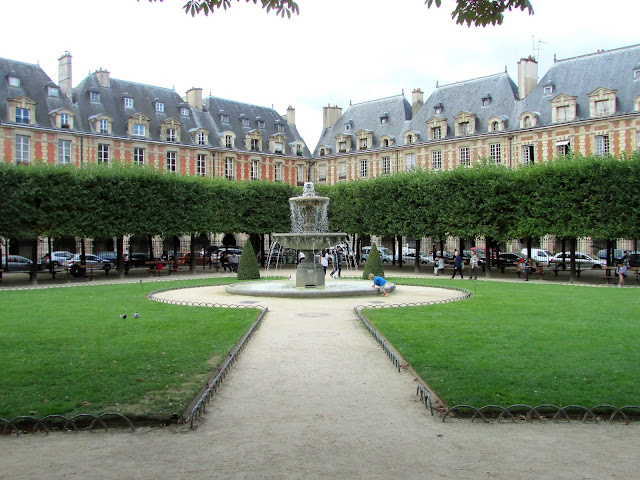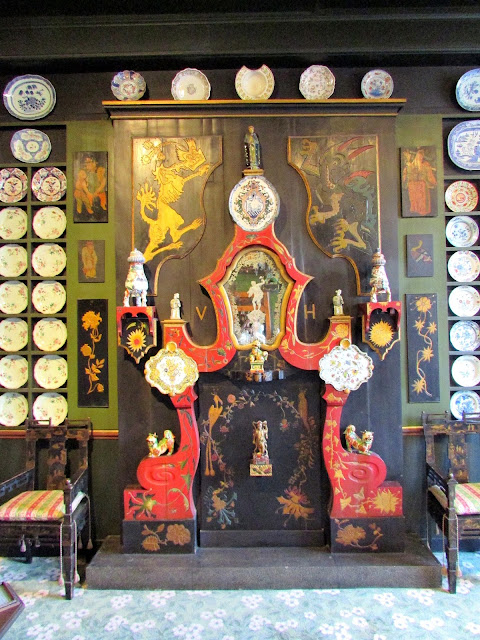I've struggled with selecting a format for this photo essay.
It could be done chronologically but that may become pedantic when you are spending your 12th hour with us trying to figure out which road to take out of the etoile we're standing in. Or why our upside down map and incomplete instructions aren't working.
A thematic format might be nice except you may get bored with 87 pictures of water lillies. Other items may not fit into an easy category like 'history' or 'places' or 'people'.
So I'll try to combine them both, going through the trip by days but stopping to add some detail where a subject matter was visited more than once. I'll probably throw in a totally unrelated, non-sequitor type reference as well, just because we came upon it.
This will probably take 4 or 5 installments. Maybe more.
Whenever Cece and I plan these trips we list 137 things to do. We never get them all done, for reasons that will become apparent, from weather or timing or the spiteful will of whatever gods rule Charleville-Mezieres. But when we get 83 of them done...we count that as a success!
Flight out is an hour + late leaving and arriving...so we miss our limo pickup. We don't miss paying for it, that was done in advance. Thank you Air Canada.
An easy cab ride into the city, our 2 bedroom apartment in The Marais 3eme is ready and we are killing time acclimatizing ourselves to the local neighbourhood.
We're in Paris, the source of modern-day liberty, what better place to start than at Place De La Republique and the statue of Marianne.
The Statue of the Republique, depicting historical scenes on the relief panels that circle the base of the bronze lady, has stood since 14 July 1883. This one depicts the storming of the Bastille.
The square was the location of the Charlie Hebdo Shooting vigils last January. Still striving for liberty.
Leaving the square we pass the Tour De Temple, last home of King Louis XVI before he was beheaded on the 21st of January 1793, the day the world changed.
On a lighter note we also spent some time walking along the Canal Saint Martin, watching the locks in operation.
If you ever get the chance to wander the streets of Paris with nothing on your mind but walking, keep a look out for these types of non-descript openings that seem to lead to an alley.
It could open up to a covered market.
The day ends after we've stayed up enough hours to get on Paris time. But not without a quick stop by 30 Rue De Saintonge, where Maximilien de Robespierre, one nasty guy as it turns out, was living at the start of the French Revolution. Up on the third floor, on the right, I'm told.
How can you not love Paris? Look what we found just killing time in our neighbourhood.
Day 2 starts with a plan...to go off the beaten path in search of a well-hidden Rose Garden.
We are still in our local area. The Marais is one
of Paris’ oldest and most visually stunning quarters. First developed in the
12th century, the neighborhood, whose name means "swamp" in French
and once was one, went from being a royal favorite under Henri IV and Louis
XIII, to falling into ruin after the French Revolution of 1789. Louis the XIV's move to Versailles hastened it's demise when the court moved with him. It was not
touched by Baron Haussmann when he built the grand boulevards for Napoleon III in the
1850's so it hosts some unique sites.
Like the Rose Garden hidden within a maze of narrow streets, the Jardin
Saint-Gilles-Grand-Veneur. A bit tricky to locate but if you persevere you are rewarded with an idyllic patch of nature.
We are here out of season, the spring must be lovely, but the bloom is still on.
And the bloom is certainly still on this group. Cece and I accompanied by Cece's sister Theresa and her husband Paul.
I never promised her a rose garden but stuff happens.
Now the day starts.
The original bronze statue of Louis the XIII commissioned by Cardinal Richelieu was melted down during the Revolution. This one took its place in 1825 and has survived a few uprisings since
Besides its historical significance, Place Des Vosges is an architectural marvel. Here is your entry to the park via a portal under one of the red brick mansions that circle the square, if that's possible.
Inside the statue of Louis XIII sits in the center. Each corner has a fountain. The red brick mansions are the frame.
And at one corner, at Number 6, the home of national hero, author Victor Hugo.
Here's a relief of the plaque.
Now before we go in I want to take a moment to talk about accessibility in Paris and elsewhere. This museum is accessible to people in wheelchairs. Our party of 4 was permitted entrance free of charge. There are no building built in 1612 in Toronto but there are many buildings in Toronto we cannot access. France has a plan. This building has been modified to include a small lift in a portion of the house not accessed by the general public.
Entrance to every museum is free of charge for the person in a wheelchair and their companion. Their complete party is granted 'front of line' access to most, if not all, museums...we didn't get to everyone but due to this benefit we did get to more than I'd expected to visit. The only exception was the Dali museum. That's not bad.
Here are some shots from inside Victor Hugo's home.
And here's a dark and shaky, but mercifully short video of Victor's bedroom, where he passed away.





















No comments:
Post a Comment